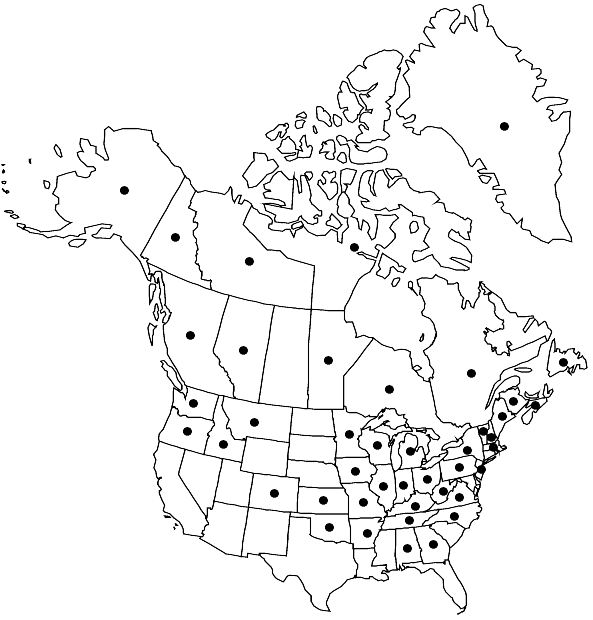Difference between revisions of "Fissidens osmundioides"
Sp. Musc. Frond., 153, plate 40, figs. 7–11. 1801,.
FNA>Volume Importer |
imported>Volume Importer |
||
| Line 40: | Line 40: | ||
|publication year= | |publication year= | ||
|special status= | |special status= | ||
| − | |source xml=https:// | + | |source xml=https://bibilujan@bitbucket.org/aafc-mbb/fna-data-curation.git/src/bb6b7e3a7de7d3b7888a1ad48c7fd8f5c722d8d6/coarse_grained_fna_xml/V27/V27_467.xml |
|genus=Fissidens | |genus=Fissidens | ||
|species=Fissidens osmundioides | |species=Fissidens osmundioides | ||
Revision as of 22:32, 27 May 2020
Plants 2–21 × 2–3 mm. Stem sparingly branched; axillary hyaline nodules absent; central strand present. Leaves in as many as 20 pairs, obovate to lanceolate, usually widest proximal to the middle, broadly acute to obtuse, often apiculate, 0.7– 2 × 0.3–0.7 mm; dorsal lamina rounded-truncate proximally, ending at or sometimes before insertion; vaginant laminae ± 1/2–3/4 the leaf length, ± equal, minor lamina ending on or near margin; margin crenulate throughout or evenly serrulate distally, elimbate; costa ending 2–14 cells before apex, taxifolius-type; lamina cells 1-stratose, distinct, smooth, bulging, firm-walled, ± hexagonal, 10–18 µm. Sexual condition dioicous; perigonia and perichaetia on elongate stems. Sporophytes 1 per perichaetium. Seta 2–2.5 mm. Capsule theca erect, bilaterally symmetric, to 1 mm; peristome taxifolius-type; operculum 1 mm. Calyptra mitrate, smooth, 1.5 mm. Spores 16–23 µm.
Distribution

Greenland, Alta., B.C., Man., N.B., Nfld. and Labr. (Nfld.), N.W.T., N.S., Nunavut, Ont., Que., Yukon, Ala., Alaska, Ark., Colo., Ga., Idaho, Ill., Ind., Iowa, Kans., Ky., Maine, Mass., Mich., Minn., Mo., Mont., N.H., N.J., N.Y., N.C., Ohio, Okla., Oreg., Pa., Tenn., Vt., Va., Wash., W.Va., Wis., Europe, Asia.
Discussion
Fissidens osmundioides is distinguished by its papillose rhizoids, evenly crenulate-serrulate leaf margin, broadly acute to obtuse and sometimes apiculate leaf apex, costa that ends well before the leaf apex, and terminal sporophytes. It is most apt to be confused with F. adianthoides, which has smooth rhizoids, irregularly serrate leaf apex, a band of lighter marginal cells, and sporophytes in the axils of proximal leaves.
Generally in moist, shaded sites of acidic and basic rocks and boulders that are sometimes subject to spray, soil and humus in seepage areas, meadows, swamps, and fens, around bases of trees
Selected References
None.